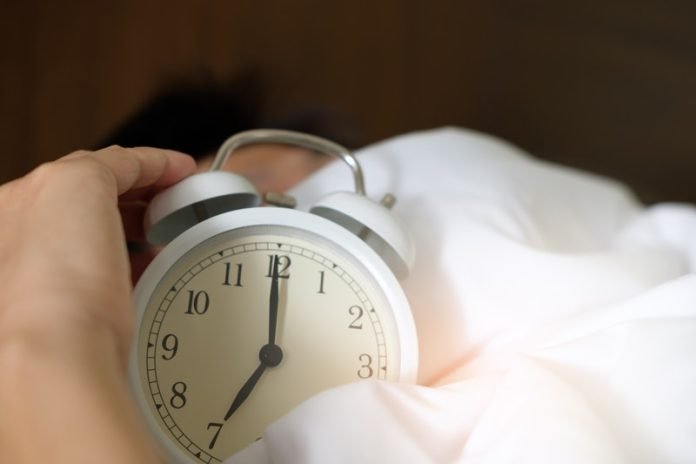
A new study shows that sleep spindles, brief bursts of brain activity occurring during one phase of sleep and captured by EEG, may regulate anxiety in people with post-traumatic stress disorder (PTSD).
The study shines a light on the role of spindles in alleviating anxiety in PTSD as well as confirms their established role in the transfer of new information to longer-term memory storage.
The findings challenge recent work by other researchers that have indicated spindles may heighten intrusive and violent thoughts in people with PTSD.
These findings may be meaningful not only for people with PTSD but possibly for those with anxiety disorders, said the team from the University of California San Francisco.
The researchers enrolled 45 participants who had all experienced combat or noncombat trauma; approximately half had moderate symptoms of PTSD and the other half had milder symptoms or were asymptomatic.
The researchers studied the spindles during non-rapid eye movement 2 (NREM2) sleep, the phase of sleep when they mainly occur, which comprises about 50% of total sleep.
Violent images used to test brain processing
In the study, participants attended a “stress visit” in which they were shown images of violent scenes, such as accidents, war violence, and human and animal injury or mutilation, prior to a lab-monitored nap that took place about two hours later.
Anxiety surveys were conducted immediately after exposure to the images as well as after the nap when recall of the images was tested.
The researchers also compared anxiety levels in the stress visit to those in a control visit without exposure to these images.
The researchers found that spindle rate frequency was higher during the stress visit than during the control visit.
Sleeping meds and electrical stimulation may promote sleep spindles
The naps in the study took place shortly after exposure to violent images—raising a question about whether sleep occurring days or weeks after trauma will have the same therapeutic effect.
The researchers think this is likely and point to interventions that could trigger the spindles associated with NREM2 sleep and benefit patients with stress and anxiety disorders.
The researchers’ next project is to study the role of spindles in the consolidation and replay of intrusive and violent memories many weeks after trauma exposure.
How to reduce anxiety in PTSD
There are several effective strategies for reducing anxiety in people with PTSD:
Seek professional help: The first step is to seek professional help from a mental health provider. A trained therapist can help you develop coping strategies to manage your symptoms and reduce anxiety.
Practice relaxation techniques: Relaxation techniques like deep breathing, meditation, and yoga can help reduce anxiety and promote relaxation.
Exercise regularly: Exercise is an effective way to reduce anxiety and improve overall physical and mental health. Even light exercise like walking or yoga can be beneficial.
Get enough sleep: Getting enough sleep is essential for managing anxiety and stress. It’s important to establish a regular sleep routine and practice good sleep hygiene.
Avoid drugs and alcohol: Using drugs and alcohol to cope with PTSD can actually make symptoms worse and increase anxiety. It’s important to avoid these substances and seek healthier ways to cope.
Stay connected: Staying connected with friends and family is important for reducing anxiety and promoting overall well-being. Joining a support group can also provide a sense of community and help you feel less alone.
Avoid triggers: Avoiding triggers that remind you of the traumatic event can help reduce anxiety. This might mean avoiding certain places or situations or limiting exposure to news or media coverage of traumatic events.
Practice self-care: Engaging in self-care activities like taking a relaxing bath, listening to music, or practicing a hobby can help reduce stress and promote relaxation.
Consider medication: In some cases, medication may be helpful in reducing anxiety and other symptoms of PTSD. It’s important to talk to your healthcare provider about whether medication is right for you.
Overall, reducing anxiety in PTSD involves developing a comprehensive treatment plan that addresses both the physical and psychological aspects of the condition.
By seeking professional help and incorporating healthy coping strategies into your daily routine, it is possible to manage symptoms and improve your quality of life.
If you care about sleep, please read studies about herb that could help you sleep well at night, and these drugs could lower severity of sleep apnea by one third.
For more information about sleep, please see recent studies that coffee boosts your physical activity, cuts sleep, affects heartbeat, and results showing how to deal with “COVID-somnia” and sleep well at night.
The study was published in Biological Psychiatry: Cognitive Neuroscience and Neuroimaging.
Copyright © 2023 Knowridge Science Report. All rights reserved.



